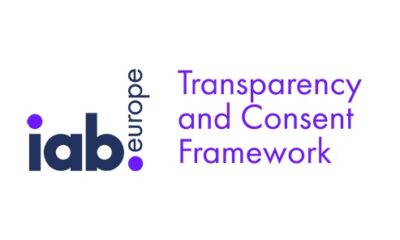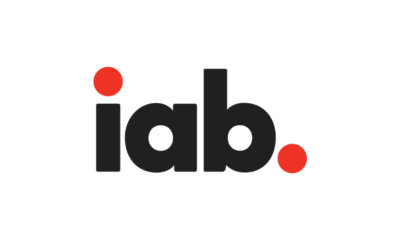Unreliable AI-Generated News and Information Websites (UAINs): Navigating the Perils of Synthetic Content

Introduction:
With the rapid advancements in artificial intelligence (AI) technology, we find ourselves in an era where AI-generated content is becoming increasingly prevalent. Among the manifestations of this technology are Unreliable AI-Generated News and Information Websites (UAINs). These sites utilize AI algorithms to generate news articles, blog posts, and other forms of content. While AI has the potential to revolutionize information dissemination, UAINs raise concerns about accuracy, reliability, and the erosion of trust in the digital landscape. In this article, we delve into the challenges posed by UAINs and discuss strategies for navigating this evolving media environment.
The Emergence of UAINs:
UAINs are websites that employ AI algorithms to automatically generate news and information content. These platforms often mimic reputable news sources in design and structure, making it difficult for users to distinguish between legitimate news sites and AI-generated ones. UAINs exploit AI’s ability to process vast amounts of data and generate content quickly, aiming to attract web traffic and generate ad revenue.
Challenges and Concerns:
- Accuracy and Reliability: UAINs lack the editorial oversight and fact-checking mechanisms employed by reputable news organizations. This absence of human judgment and verification can lead to the dissemination of misinformation, biased narratives, and sensationalized content. Inaccurate or misleading information can harm public understanding, erode trust, and undermine democratic processes.
- Ethical Implications: The rise of UAINs raises ethical questions regarding transparency and accountability. Users have the right to know whether the information they consume is generated by AI algorithms. The lack of disclosure and attribution can create a false sense of authenticity and contribute to the spread of deceptive content.
- Manipulation and Propaganda: UAINs can be exploited for malicious purposes, including the spread of propaganda, manipulation of public opinion, and the creation of deepfake news. By leveraging AI algorithms, bad actors can generate convincing content that aligns with their agendas, potentially influencing public discourse and decision-making processes.
- Trust and Credibility: UAINs pose a significant challenge to the credibility of authentic news sources. When users are exposed to misinformation and unreliable content through UAINs, it becomes increasingly difficult to discern between trustworthy journalism and fabricated narratives. This erosion of trust undermines the foundations of a well-informed society.
Navigating the UAIN Landscape:
- Media Literacy and Critical Thinking: Enhancing media literacy skills is crucial in navigating the UAIN landscape. Users should be encouraged to verify information from multiple sources, cross-reference facts, and critically evaluate the credibility of the websites they visit.
- Source Evaluation: Scrutinizing the source of information is vital. Users should pay attention to the ownership, reputation, and track record of websites. Fact-checking organizations and online tools can assist in determining the reliability of the information presented.
- Editorial Standards: Reputable news organizations should continue to uphold rigorous editorial standards, emphasizing the importance of quality journalism, fact-checking, and unbiased reporting. Clear differentiation between human-generated content and AI-generated content can help maintain trust in traditional news sources.
- Technological Solutions: AI and technology developers should work on developing algorithms and tools that can detect and label AI-generated content. This can help users make informed choices and navigate the online landscape more effectively.
- Regulatory Frameworks: Governments and regulatory bodies need to address the challenges posed by UAINs through the formulation of policies and regulations. Guidelines for labeling AI-generated content, enforcing transparency, and combating misinformation can contribute to a more trustworthy digital environment.
Conclusion:
As AI continues to advance, the emergence of Unreliable AI-Generated News and Information Websites (UAINs) presents significant challenges to the integrity of news and information consumption. The dissemination of inaccurate and misleading content undermines trust and poses risks to societal discourse. By promoting media literacy, supporting reputable news organizations, and embracing technological and regulatory solutions, we can mitigate the negative impact of UAINs and foster a more informed and trustworthy digital landscape. Collectively, we must strive to preserve the integrity of information and safeguard the principles of a well-informed society in the face of evolving AI technology.


The world of online advertising is complex, but at its core, it’s a process of matching advertisers with users. Here’s a simplified breakdown of the journey from ad request to response:
1. Ad Request
- User visits a website: When you load a webpage, the website sends a request to ad servers for ads to display.
- Ad server receives request: The ad server, a computer system that manages and delivers ads, receives this request.
2. Ad Auction
- Advertisers bid: Advertisers compete for ad placements through a real-time auction.
- Factors affecting bids: Several factors influence bid amounts, including keyword relevance, ad quality, and user demographics.
- Winner determined: The ad server selects the highest bidder whose ad meets the website’s requirements.
3. Ad Delivery
- Ad served: The winning ad is sent to the user’s browser.
- Ad formats: Ads come in various formats, including display ads, video ads, and native ads.
- Ad placement: The ad is displayed in a specific location on the webpage.
4. User Interaction and Tracking
- Ad networks: These platforms connect advertisers with publishers.
- Ad exchanges: These digital marketplaces facilitate real-time bidding for ad inventory.
- Demand-side platforms (DSPs): These platforms allow advertisers to buy ad inventory efficiently.
- Supply-side platforms (SSPs): These platforms help publishers manage and sell their ad inventory.
Additional Considerations
- Ad targeting: Ads are often targeted to specific audiences based on demographics, interests, and behavior.
- Ad fraud: Unfortunately, ad fraud is a significant issue in the industry, with bad actors attempting to generate fake ad impressions.
- Ad blocking: Some users employ ad-blocking software, which can impact ad revenue for publishers.
- This is a simplified overview. The actual process involves numerous complexities and nuances, such as ad formats, bidding strategies, and measurement metrics.
You can read more in this Google help article.
Digital Market
AdSafeProtected: A Closer Look

AdSafeProtected is a domain owned by Integral Ad Science. It’s a tool used by various companies that deliver advertisements on popular websites like YouTube, Yahoo, and Google.
What is its purpose?
The primary function of AdSafeProtected is to ensure that the ads you see are safe and suitable for the audience. It helps
Verify ad content: Checks ads for inappropriate or harmful content.
Prevent ad fraud: Protects advertisers from fraudulent ad impressions.
Improve ad quality: Ensures ads are relevant and engaging.
Potential Issues
While AdSafeProtected is legitimate, it’s sometimes associated with problems like:
- Pop-up errors: These might be due to certificate issues and not necessarily a serious problem.
- Adware-related issues: In some cases, AdSafeProtected has been linked to adware, which can display intrusive ads and redirect you to unwanted websites.
What to do if you encounter problems
If you’re experiencing issues with AdSafeProtected, here are some steps you can take:
- Clear browser cookies and cache: This might resolve temporary problems.
- Update your browser: Ensure you’re using the latest version.
- Use an ad blocker: If you’re concerned about intrusive ads, consider using an ad blocker.
- Scan your computer for malware: If you suspect adware, run a thorough scan with reputable antivirus software. 1. What is adware? What you need to know to keep your system secure – N26 n26.com
Remember:
While AdSafeProtected itself is not malicious, it can be associated with other issues. If you continue to experience problems, it’s essential to take steps to protect your system.

As traditional cable TV audiences dwindle, advertisers are increasingly turning to over-the-top (OTT) platforms like Netflix, Hulu, and Disney+ to reach viewers. But how exactly does OTT advertising work? Let’s dive into the world of streaming ads, from targeting your ideal audience to measuring the success of your campaign.
What is OTT Advertising?
OTT advertising delivers ads directly to viewers through streaming services and devices. Unlike traditional TV ads, which are one-size-fits-all, OTT ads can be highly targeted to specific demographics, interests, and even viewing habits. This makes them a powerful tool for reaching engaged audiences with relevant messages.
How Does it Work?
Here’s a simplified breakdown of the OTT advertising process:
- Targeting: Advertisers choose the platforms and demographics they want to reach. This could be based on age, gender, location, interests, or even viewing behavior (like binge-watching a specific show).
- Ad Delivery: Ads are then delivered through one of two methods:
- Client-Side Ad Insertion (CSAI): Ads are inserted into the content stream on the viewer’s device. This means the ad could potentially be blocked by ad blockers.
- Server-Side Ad Insertion (SSAI): Ads are stitched into the content stream on the server before it’s sent to the viewer’s device. This makes them unskippable and un-blockable.
- Tracking and Measurement: Advertisers can track how their ads are performing using metrics like impressions, clicks, and conversions. This data helps them refine their targeting and optimize their campaigns for better results.
The Advantages of OTT Advertising
There are several reasons why OTT advertising is becoming increasingly popular:
- Precise Targeting: Reach your ideal audience with laser-sharp accuracy, unlike the broader reach of traditional TV ads.
- Engaged Viewers: OTT viewers are typically more engaged with the content they’re watching, making them more receptive to advertising.
- Interactive Ads: Some OTT platforms allow for interactive ad formats, such as shoppable ads, which can further increase engagement and conversions.
- Detailed Measurement: Track the performance of your campaigns in real-time and make data-driven decisions to optimize your spending.
The Future of OTT Advertising
As the OTT market continues to grow, so too will the opportunities for advertisers. We can expect to see even more advanced targeting options, dynamic ad formats, and ways to measure the impact of ads on brand awareness and purchase intent.
Ready to Cut the Cord on Traditional Ads?
OTT advertising offers a powerful way to reach engaged audiences in a targeted and measurable way. If you’re looking to take your marketing to the next level, consider giving OTT advertising a try.
Here are some additional tips for getting started with OTT advertising:
- Do your research: Understand your target audience and the OTT platforms they use.
- Set clear goals: What do you want to achieve with your campaign?
- Create high-quality ads: Your ads should be engaging and relevant to your target audience.
- Track your results: Use data to measure the success of your campaign and make adjustments as needed.
With careful planning and execution, OTT advertising can be a valuable tool for reaching new customers and growing your business. So, cut the cord on traditional ads and start streaming your message to the right audience today!
I hope this blog has given you a good overview of how OTT advertising works.
-

 Ad Tech1 year ago
Ad Tech1 year agoWhat is Ad Stitching?
-

 Featured1 year ago
Featured1 year agoHow to find TCF String – Chrome Network Tab?
-

 1 year ago
1 year agoHow to verify TC String’s origin from a CMP participating in the IAB Transparency and Consent Framework (TCF)
-

 1 year ago
1 year agoConquering the Living Room: Top 5 Ad Servers for CTV Domination in 2024
-

 Ad Tech1 year ago
Ad Tech1 year agoAI on Advertising
-

 1 year ago
1 year agoCutting the Cord, Not the Ads: How OTT Advertising Works
-

 Advertising1 year ago
Advertising1 year agoChrome Says Cookie Crumbles: What You Need to Know about the Phase-Out
-

 Advertising2 years ago
Advertising2 years agoUnderstanding the IAB Content Taxonomy: Categorizing Content for Enhanced Advertising Relevance





